Pages That Need Review
00_1885 Scrapbook of Newspaper Clippings Vo 2, 2005.120.002
1885 Scrapbook of Newspaper Clippings Vo 2 085
66
MOUNT AUBURN CEMETERY America's Oldest Garden Cemetery — We are indeed pleased to bring to the attention of our readers in this Review, Mount Auburn Cemetery, one of the most outstanding beautiful burial grounds in the entire country.
It can be truly said that the progress of civilization in any community may be judged by the advancement that has been made in the care and respect for the memory of those who have passed to the great beyond. We deem it eminently fitting and proper, therefore, that we direct the attention of our readers to this burial ground in Cambridge, of which this entire section of the state may feel proud and which reflects in its every aspect that impressive dignity, reverence and seclusion which in simplicity and beauty is eloquent of silent tribute to those who rest beneath its protecting elms.
Situated between the Charles River and the Cambridge-Watertown highway, Mount Auburn has the advantage of accessibility from Metropolitan Boston. Comprising 160 acres of consecrated land, beautifully landscaped, its nine miles of paved avenues and over 11 miles of winding pathways all add to the attractiveness which judicious planning and constant care have contributed, and, of course, not forgetting the beautiful rose and perennial garden and sunken pool which is a particular item of interest open to the public.
Mount Auburn is rich in tradition and historical association and some of the nation's most illustrious sons and daughters are interred her. So long is the full list of men and women of national distinction that it has frequently been called the Westminster Abbey of America. Some of the eminent persons include Henry W Longfellow, Oliver Wendell Holmes, James Russell Lowell, Mary Baker Eddy, Phillips Brooks, Charles W. Eliot, Edwin Booth and Louis Agassiz, among hundreds of others.
A modern cemetery located in the vicinity of a growing city is an enterprise requiring not only a large outlay of money, but also a highly trained business organization. Mount Auburn is a modern burial place, built from the experience of ages. Non-sectarian in character it is a place of permanent, enduring beauty and certain of perpetual care and maintenance of all lots purchased after the year 1875, through a special trust fund set aside for this purpose. ✓
With extensive greenhouses, nursery, two chapels, cremation columbaria, and service buildings, the completeness of facilities is designated for the entire satisfaction of those who wish to be certain that the final resting place of a departed loved one is to receive the utmost in perpetual care.
Cambridge Tribune 4/25/1947 — 7/9/1948? 3/20/1951 — Arlington Press 2/5/1948 - 3/30/50 ([arrow pointing to 50] inferior printing) Back Bay Ledger 5/6/1948 " " " 5/26/1949 " " " 5/24/1951 ($5,400,000 fund) " " " 5/1/1952 ($5,600,000 fund) " " " 5/27/1954 ($5,900 000 ")
5/1954 MOUNT AUBURN CEMETERY Back Bay Ledger "America's Oldest Garden Cemetery"
We are indeed pleased to bring the attention of our readers of this Review, Mount Auburn Cemetery, one of the most outstanding, beautiful burial grounds in the entire country.
It can be truly said that the progress of civilization in any community may be judged by the advancement that has been made in the care and respect for the memory of those who have passed to the great beyond. We deem it eminently fitting and proper, therefore, that we direct the attention of our readers to this burial ground in Cambridge, of which this entire section of the state may feel proud and which reflects in its every aspect that impressive dignity, reverence and seclusion which in simplicity and beauty is eloquent of silent tribute to those who rest beneath its protecting elms.
Situated between the Charles River and the Cambridge-Watertown highway, Mount Auburn has the advantage of accessibility from Metropolitan Boston. Comprising 165 acres of consecrated land, beautifully landscaped, its nine miles of paved avenues and over 11 miles of winding pathways all add to the attractiveness which judicious planning and constant care have contributed. The beautiful rose and perennial garden and sunken pool located here are items of particular interest and are always open to the public.
# Daily many bird lovers visit this sanctuary to observe all types of birds in this beautiful bird watching spot. #
Mount Auburn is rich in tradition and historical association and some of the nation's most illustrious sons and daughters are interred here. So long is the full list of men and women of national distinction that is has frequently been called the Westminster Abbey of America. Some of the eminent persons included Henry W. Longfellow, Oliver Wendell Holmes, James Russell Lowell, Mary Baker Eddy, Philips Brooks, Charles W. Eliot, Edwin Booth and Louis Agassiz.
A modern cemetery located in the vicinity of a growing city is an enterprise requiring not only a large outlay of money, but also a highly trained business organization. Mount Auburn is a moder burial place, built from the experience of ages. Non-sectarian in character it is a place of permanent, enduring beauty and certain of perpetual care and maintenance of all lots purchased after the year 1875, through a special trust fund set aside for this purpose, Mount Auburn Cemetery has an investment fund of $5,900,000.
With extensive greenhouses, nursery, two chapels, cremation columbaria, and service buildings, the completeness of facilities is designed for the complete satisfaction of those who wish to be certain that the final resting place of a departed loved one is to receive the utmost in perpetual care.
1885 Scrapbook of Newspaper Clippings Vo 2 086
67
BOSTON TRAVELER, MONDAY, JUNE 30, 1947
[black and white photograph of a chapel surrounded by trees on a hill] ALL-PURPOSE CHAPEL—"Wee Kirk o' the HeatherAP Photo," chapel in California's famous cemetery, Forest Lawn Memorial Park, where one can be married, buried or buy life insurance.
For Life and for Death You Can Be Married or Buried or Go to Pray In $55,000,000 California Cemetery
By HAL BOYLE
GLENDALE, Calif., June 30 (AP)—One of the liveliest spots in Southern California is a cemetery where you can buy life insurance and more weddings are held there than any other place in America.
Only Hollywood itself ranks higher as a tourist attraction in this area than Forest Lawn Memorial Park, whose 300 statuary-studded acres draws 1,500,000 visitors annually.
It is one of Glendale's biggest industries with a staff of 800 employes, and it is a $55,000,000 monument to 67-year-old Dr. Hubert Eaton, a mining engineer who took over the management 30 years ago.
Known now somewhat mystically as "the builder," Eaton is a supersalesman with artistic impulses.
MAKING DEATH PLEASANT
Right at the start in 1917 he looked over the 50-acre cemetery and decided that it, like every other burial ground he had seen, was depressing and ugly. He set out to create a cemetery "beautiful and restful—a bright lovely garden where happiness is recalled and sorrow forgotten."
In three decades he has managed to make death about as pleasant as possible and enlarged the cemetery to twelve times its original size. Some Forest Lawn innovations:
A heart-shaped cemetery for children known as "babyland."
Bronze grave markers level with
the grass instead of traditional monuments.
A pastel-colored mortuary chamber for funerals called "The Slumber Room."
Two hundred statues which make up the biggest collection of large marble statuary in America.
Fifty stained glass windows including a copy of "The Last Supper," viewed by from 250,000 to 500,000 visitors annually.
A bronze-doored "Garden of Life," which opens only to gold keys given to survivors of the dead interred there.
A Memorial Court of Honor which Eaton would like to amke into "The Westminster Abbey of America." Distinguished Americans are interred here without cost. Present inhabitants: Gutzon Borglum, the sculptor, and Carrie Jacobs Bond, composer.
A seven-level earthquake-resistant mausoleum containing enough concrete to build a 60story skyscraper.
Forest Lawn is a marble index to the film industry, a kind of "Who Was Who" of the entertainment world. Here lie Will Rogers, Marie Dressler, Flo Ziegfeld, John Gilbert, Edna May Oliver, Lon Chaney, Russ Columbo, Tom Mix, Wallace Reid, Charles Ray, Ruth Roland, Chic
Sale, Ben Turpin—and scores of others.
Jean Harlow is there in platinum silence behind a marble slab that says "Our Baby" and bears lipstick from her mother's kiss. Carole Lombard still gets two fresh flowers each day, and her nearest neighbor is her mother. The crypt on her other side is empty.
Buried there also are the designer of the Golden Gate bridge, the man who invented push-back theater seats, the author of "The Wizard of Oz," a doctor who delivered 7000 babies, a pathologist who performed 30,000 autopsies, and the mane who introduced table tennis to America.
The cemetery has had 106,000 interments and 16,000 weddings— 226 in June alone. Its permanent tenants before the present boom period began outnumbered the living population of Glendale.
"We'll be out of space in another 20 years," said a representative, "and we're planning to establisth another Forest Lawn patterened after this, but one and a half times as big, overlooking San Fernando Valley."
Forest Lawn has a flower shop, three churches, an advertising manager and two publicity men. You can be christened, married, cremated or buried there. You can also go there to pray, buy a life insurance policy or listen to an art lecture. One minister was ordained in the cemetery.
The advertising slogan of Forest Lawn:
"Everything in one place."
1885 Scrapbook of Newspaper Clippings Vo 2 087
66
[repeated text from prevous page 66]
66a
MOUNT AUBURN CEMETERY "America's Oldest Garden Cemetery"
We are indeed pleased to bring to the attention of our readers of this Review, Mount Auburn Cemetery, one of the most outstanding, beautiful burial grounds in the entire country.
It can be truly said that the progress of civilization in any community may be judged by the advancement of that has been made in the care and respect for the memory of those who have passed to the great beyond. We deem it eminently fitting and proper, therefore, that we direct the attention of our readers to this burial ground in Cambridge, of which this entire section of the state may feel proud and which reflects in its every aspect that impressive dignity, reverence and seclusion which in simplicity and beauty is eloquent of silent tribute to those who rest beneath its protecting elms.
Situated between the Charles River and the Cambridge-Watertown highway, Mount Auburn has the advantage of accessibility from Metropolitan Boston. Comprising of 165 acres of consecrated land, beautiful landscaped, its nine miles of paved avenues and over 11 miles of winding pathways all add to the attractiveness which judicious planning and constant care have contributed. The beautiful rose and perennial garden and sunken pool located here are items of particular interest and are always open to the public.
Daily many bird lovers visit this sanctuary to observe all types of birds in this beautiful bird watching spot.
Mount Auburn is rich in tradition and historical association and some of the nation's most illustrious sons and daughters are interred here. So long is the full list of men and women of national distinction that it has frequently been called the Westminister Abbey of America. Some of the eminent persons included Henry W. Longfellow, Oliver Wendell Holmes, James Russell Lowell, Mary Baker Eddy, Philips Brooks, Charles W. Eliot, Edwin Booth and Louis Agassiz.
A modern cemetery located in the vicinity of a growing city is an enterprise requiring not only a large outlay of money, but also a highly trained business organization. Mount Auburn is a modern burial place, built from the experiences of ages. Non-sectarian in character it is a place of permanent, enduring beauty and certain of perpetual care and maintenance of all lots purchased after the year 1875, through a special trust fund set aside for this purpose, Mount Auburn Cemetery has an investment fund of $5,800,000.
With extensive greenhouses, nursery, two chapels, cremation columbaria, and service buildings, the completeness of facilities if designed for the complete satisfaction of those who wish to be certain that the final resting place of a departed loved one is to receive the utmost in perpetual are.
BACK BAY LEDGE May 14, 1953 " June 1, 1955 ($6,100,000)
1885 Scrapbook of Newspaper Clippings Vo 2 088
67
66b
MOUNT AUBURN CEMETERY "America's Oldest Garden Cemetery"
We are indeed pleased to bring to the attention of our readers [at?] this Review, Mount Auburn Cemetery, one of the most outstanding, beautiful burial grounds in the entire country.
It can be truly said that the progress of civilization in any community may be judged by the advancement that has been made in the care and respect for the memory of those who have passed to the great beyond. We deem it eminently fitting and proper, therefore, that we directed the attention of our readers to this burial ground in Cambridge, of which this entire section of the state may feel proud and which reflects in its every aspect that impressive dignity, reverence and seclusion which in simplicity and beauty is eloquent of silent tribute to those who rest beneath its protecting elms.
Situated between the Charles River and the Cambridge-Watertown highway, Mount Auburn has the advantage of accessibility from Metropolitan Boston. Comprising 165 acres of consecrated land, beautifully landscaped, its nine miles of paved avenues and over 11 miles of winding pathways all add to the attractiveness which judicious planning and constant care hav contributed. The beautiful rose and perennial gardent and sunken pool located here are items of particular interest and are always open to the public.
Mount Auburn is rich in tradition and historical association and some of the nation's most illustrious sons and daughters are interred here. So long is the full list of men and women of national distinction that it has frequently been called the Westminster Abby of America. Some of the eminent persons include Henry W. Longfellow, Oliver Wendell Holmes, James Russell Lowell, Mary Baker Eddy, Phillips Brooks, Charles W. Eliot, Edwin Booth and Louis Agassiz.
A modern cemetery located in the vicinity of a growing city is an enterprise requiring not only a large outlay of money, but also a highly trained business organization. Mount Auburn is a modern burial place, built from the experiences of ages. Non-sectarian in character it is a place of permanent, enduring beauty and certain of perpetual care and maintenance of all lots purchased after the year 1875, through a special trust fund set aside for this purpose. # Mount Auburn Cemetery has a investment fund of $5,400,000 #
With extensive greenhouses, nursery, two chapels, cremation columbaria, and service buildings, the completeness of facilities is designated for the complete satisfaction of those who wish to be certain that the final resting place of a departed loved one is to receive the utmost in perpetual care.
[image of part of a city skyline]
May Back Bay Ledger 5/24/51
1885 Scrapbook of Newspaper Clippings Vo 2 090
69
Under the Sun's Bonnet CAMBRIDGE CHRONICLE Jan. 28, 1954
Resting Place Of The Famous
Did you know that the persons buried in Mount Auburn Cemetery outnumber the present population of the largest cvity in any one of the states of Idaho, Montana, Nevada, North Dakota, South Dakota, or Wyoming? ***** Did you know that Franklin Pierce was sitting under a tree in this first garden cemetery in America when he received word of his nomination for President of the United States? ***** Did you know that the cemetery was once a favorite carriage drive for Boston families, and that Charles Dickens and the Prince of Wales, later Edward VIII, were among those taken on visits to Mount Auburn? ***** All this information we have gleaned from an interesting volume, "Mount Auburn Biographies," which has been sent us by the Proprietors of the Cemetery of Mount Auburn. ***** Foster W. Russell is author of the biographical sketches, there is an introduction by Oakes I. Ames, and a historical sketch by James Gore King. ***** Mr. Russell's biographical sketches of some of the famous people buried in Mount Auburn are masterpieces of concise but extremely informative writing. ***** We learn, for example, that Henry Wadsworth Longfellow received only $15 for writing "The Village Blacksmith" in 1840, but received three thousand dollars for "The Hanging of the Crane" in 1874. Everyone has read the first poem; how many of our readers have ever read the other? ***** The sketches tell us that "Billy" Russell, three times Governor of Massachusetts and father of our ex-Mayor Richard M. Russell, was the first to receive a summa cum laude from Boston University Law School, was elected without his knowledge to the Cambridge city council, and later became mayor for four terms on a nonpartisan ticket. ***** They tell us too that Amy Lowell, the Imagist poet and author of a famous biography of John Keats, "although brough up in an ultra-conservative household...was frankly and publicly addicted to the smoking of cigars." ***** Other famous persons buried in Mount Auburn, whose biographies are sketched in the book, include:- Thomas Bailey Aldrich, the author and editor; Nathaniel Bowditch, author of the famous ["Ameri?]can Practical Navigator," century-old guide and friend of [?]g officers; Charles Bulfinch, designer of the Boston State [?] ***** [?]an Clark, the famous Cambridge telescope maker; Mary [?] Eddy, discoverer of the principles of Christian Science; [?] Farmer, author of the famous cookbook; Asa Gray, the [?] Harvard botanist. The sketch of Gray says that Charles [?] in a letter to Gray in 1857 outlined for the first time the [?] [wh?]ich he intended to write on the origin of species. He sent [?]e of the three advance copies. ***** [Oth?]er notables who rest in Mount Auburn include Percy [?]on, the great Harvard football coach; Henry Lee Higginson [fou?]nded the Boston Symphony Orchestra and gave Soldiers [?]nd the Harvard Union to Harvard; Oliver Wendell Holmes, [?]t, physician, professor and author of "The Autocrat of the [?]st Table," Julia Ward Howe, who wrote "The Battle Hymn [?] Republic,"; Senator Henry Cabot Lodge; James Russell [?] the poet; Francis Parkman, author of "The Oregon Trail;" [Ele?]anor Porter, author of "Pollyanna" which "sold over a [?] copies and gave a new word to the language." ***** [?]o Senator Charles Sumner, the Abolitionist, who was beaten [?] with a cane by a Southern congressman; Dr. Benjamin [?]ouse, the pioneer vaccinator; Winslow Homer, the famous [?] of the sea; Nathaniel Jarvis Wyeth ("manager of an [?]pany which harvested ice from Fresh Pond in Cambridge, [inve?]nted almost every tool then used in the ice business and [?] establish the ice trade with the Wst Indies"); and Dr. [?] Wyman, founder of the Mount Auburn Hospital whose [?] House bears his name. ***** [Ma?]ny presidents of Harvard University are, of course, buried [?]nt Auburn. "From John T. Kirkland in 1810 successively [?] Josiah Quincy, Edward Everett, Jared Sparks, Cornelius [?]on, Charles W. Eliot, and Abbott Lawrence Lowell, all of [?]d's deceased presidents have found a place of repose in [?] Auburn, with the exceptions of James Walker and Thomas [?] ***** [?] have listed only a few of the famous people buried in [?] Auburn, and quoted only a few scores of interesting facts [?]ed in "Mount Auburn Biographies." It will become a per[?] and valuable part of our historical reference library.
BOSTON TRAVELER, WEDNESDAY, NOVEMBER 29, 1950 69a
3900-Yr.-Old Cemetery Dug Up in Ireland
National Museum Officials Study It
DUBLIN, Nov. 29 (UP)—An ancient burial ground discovered on the lands of a farmer at Four Knocks, County Meath, is being studied by officials of the National Museum.
They have been working at one of four mounds. Their work already has revealed subterranean passages and chambers similar to the world-famous caves at Newgrange, eight miles away.
During recent weeks the little village of Clonalvey has been thronged with people from all over the country who have come to view the excavations.
The date of some of the finds has been established at from 1500 to 2000 B.C.
The chief discovery so far is a 15-foot passageway leading to a circular chamber in the center of a mound.
The chamber, which is 15 feet in circumference and 16 feet from floor to roof, is constructed by overlapping flagstones and contains three small alcoves, arranged in cruciform plan.
Each alcove is roofed with an 8-hundredwieght slab and decorated with unusual workings similar to those at Newgrange.
On the floor of the chamber, small peblles were found scattered around. The latter were drilled and are believed to be the remains of necklaces typical of the period.
The large quantities of the residue of cremated bones and charcoal which were found also bore witness to the great extent to which the chamber had been used as a crematorium.
Many interesting specimens of skeletons were discovered in the
passage, which is seven feet high.
SKELETONS HUGE
Two of the skeletons were larger in height and width than the largest present-day man.
Excavations on the surface of the mound revealed several shallow graves containing the skeletons of both babies and adults.
The grave, which were made of stone slabs, also contained earthenware urns characteristic of vessels dating from 2000 B.C. In the urns were powdered substances believed to be the residue of food which usually was left beside the body in accordance with ancient custom.
Several stones bearing peculiar markings were found in the earth near the graves.
To date, only one of the four mounds (hence Four Knocks), has been explored and research work on the remaining three will begin shortly.
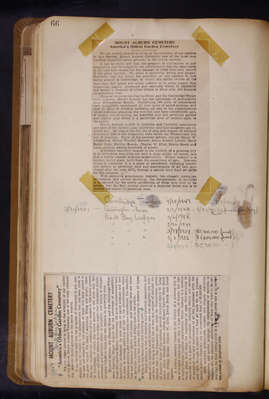
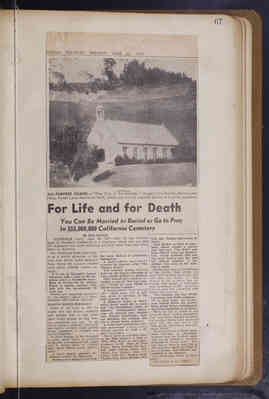
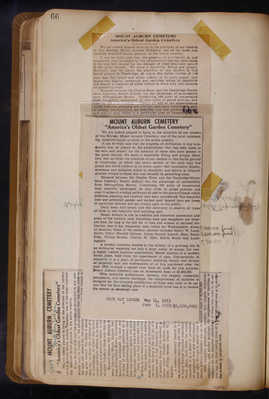
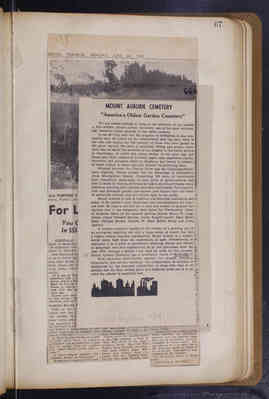
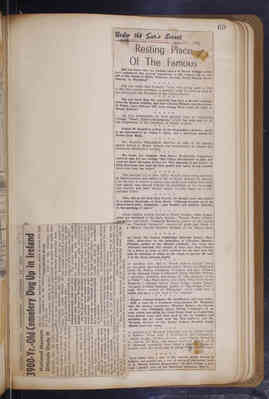

 Follow Us on Instagram
Follow Us on Instagram 